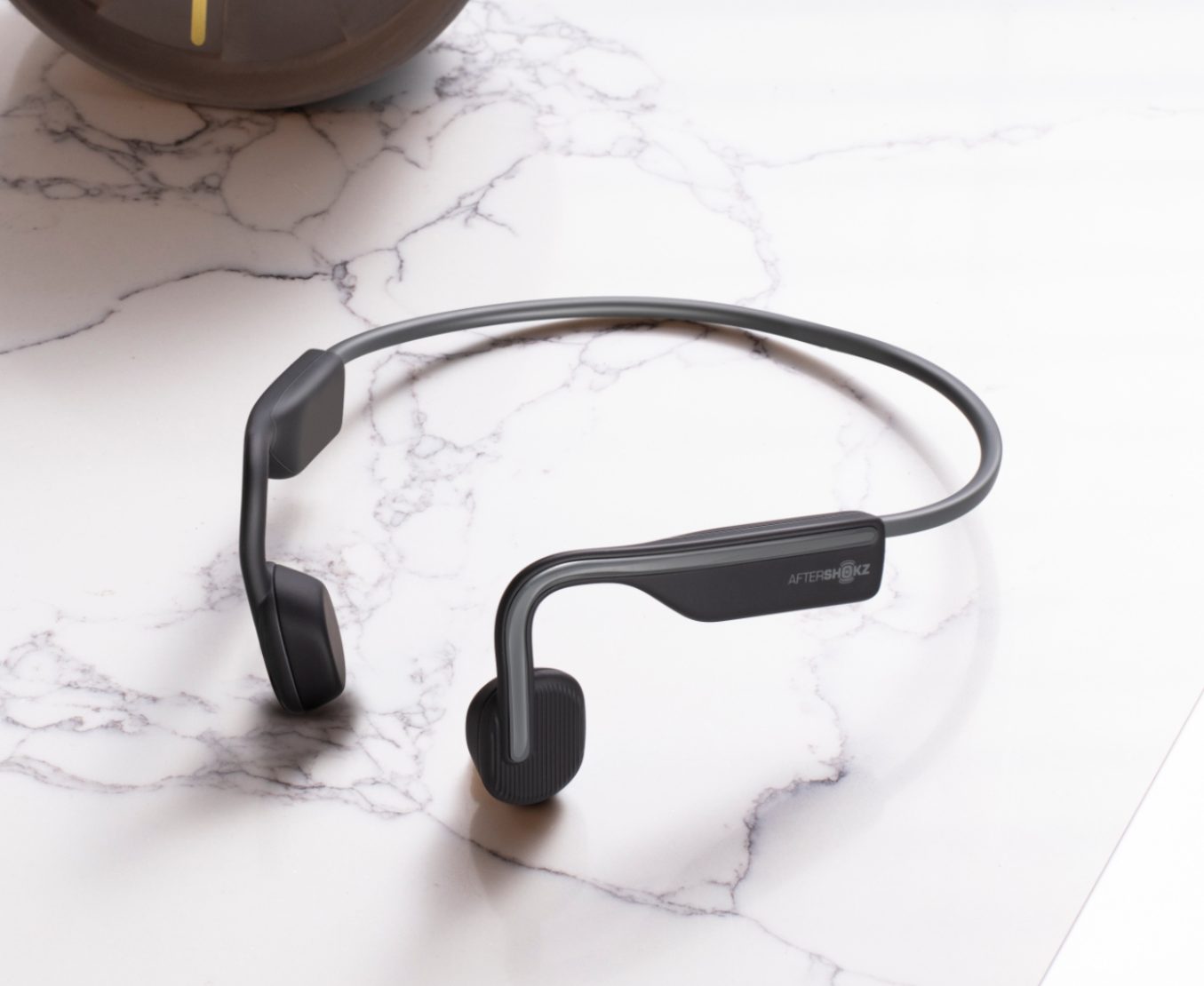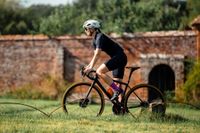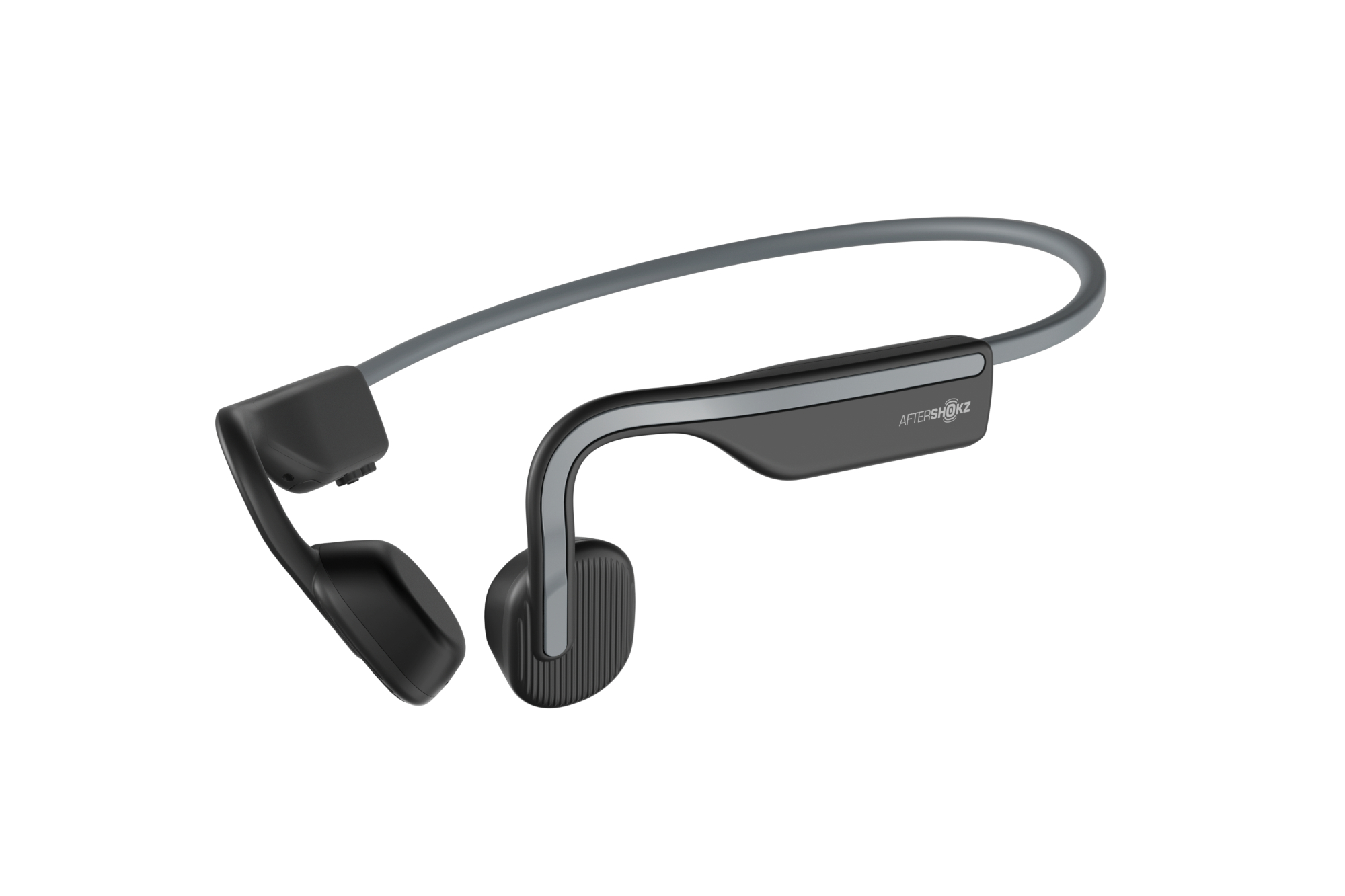Aftershokz OpenMove headphones review
Sound transmitted via vibration, as per these AferShokz OpenMove headphones, is ideal for indoor cyclists and those who want to keep their ears open

A lightweight, sweat resistant set of headphones which allow you to enjoy audio without cutting off your connection to the outside world. Sounds outside of the audio were always clear, and the quality of music emitted was always good. The Bluetooth connection would drop out very briefly on occasion, but this wasn't a major concern. Our only quibbles were the fit around the back of the head and slightly odd feel of vibrations through the earpieces.
-
+
Sound quality
-
+
Ability to hear outside noise
-
-
Vibration
-
-
Awkward fit
You can trust Cycling Weekly.

Update: Unfortunately, following the test period - and approximately six months into use - these headphones failed, seemingly due to a fault with the charging port.
Checking the Troubleshooting page, "My OpenMove isn’t charging" is the first item listed. If we were a customer, our headphones would have been covered under the two-year warranty. However, we were pleased to notice when testing the new (and more expensive) OpenRun headphones, that the brand now uses a new proprietary charging port. We believe that this new charging mechanism is likely to reduce the chance of issues.
The rest of the review copy has not been altered since the product failure, and we left the score untouched, as this would be a warranty fix. However, it's worth bearing in mind, and we would be inclined to advise shoppers to investigate the OpenRun option.
Bone conduction headphones, like these Aftershokz OpenMove headphones, are designed to transmit sound to your auditory nerve via vibration - therefore leaving your ears open to outside noise. This makes them a valid option for cyclists who want to listen to music or podcasts when riding, whilst remaining aware of their surroundings.
Not everyone is comfortable with listening to music whilst cycling outside, but these headphones also have another use: because they don't sit in your ears, and are wireless, they're also less vulnerable to damage from sweat - which, as a regular visitor to the virtual worlds of Watopia and Sufferlandria, was my primary interest.
The OpenMove earphones are a relatively new launch from AferShokz, and they sit at a more entry-level price tag compared to the brand's other offerings (such as the AfterShokz Titanium headphones). However, they're far from basic.
Weighing in at 29g, the OpenMoves are lightweight and flexible, featuring curved ear hooks and lightly magnetic earpieces which snap to meet each other when out of use.
The latest race content, interviews, features, reviews and expert buying guides, direct to your inbox!

The loop that sits at the back of the head is made from a malleable plastic, and there is an on/off button on the right hand side as well as volume controls and a charging port which takes a USB C cable. Charing takes two hours. The system is sweat resistant, though you're advised to dry them out before charging if you do get them 'moist'.
These headphones have three modes - standard, vocal booster and ear plug mode.
The first is what you'd expect to use most of the time, using Aftershokz's 7th generation of bone conduction tech to deliver sound. Select vocal booster and higher frequencies enjoy a boost, whilst the 'ear plug' mode is for use alongside supplied foam ear plugs (these are very basic ear plugs you could buy in a pharmacy and replace easily if you have a preferred pair), lowering the volume and bass and effectively returning the sound to a standard in-ear experience. I used the standard mode most of the time.
The headphones use a Bluetooth 5.0 chip, which connects to the audio feeding device. In my case, I mainly hooked them up to my phone - usually featuring playlists from Spotify that allow me to indulge my inner punk and pretend I'm still 16-years-old whilst pounding pavements or pedals. The paired device will stay connected up to 10 metres. The connection was always quick. I did find the sound broke up briefly during some uses - leaving the vocalist omitting staccato oddities into my ears - but this was occasional and always very short-lived (sub 20 seconds).
The battery lasts a claimed six hours of continuous use (10 days on standby), and I never found myself disappointed with the duration between charges. I did manage to run them out accidentally several times - because I'd end the session by closing down the app in use (eg, Spotify), remove the headphones and fail to press the on/off button. Typically I'd realise a few hours later when I could faintly hear them emitting the sound of a phone call or random Facebook cat video at the foot of the stairs where I'd discarded them.

The actual audio was always good - always full-bodied and never tinny. I did find that I could sometimes hear it having removed the headphones, more so than with in-ear options, so it is worth testing this to avoid being that anti-social person playing your tunes to the (albeit socially distant) train carriage. Regardless, I was impressed that I could always hear what was going on around me, walking into town to the tune of the raucous Girl Anachronism by my favourite punk cabaret band, for example, I could hear every car from a reasonable distance. This is notable because other bone-conducting headphones tested by the Cycling Weekly team have been less successful - with outside noises not audible over the sound of the music, pretty much defeating the object.
Training indoors the earphones stayed in place despite my sweating profusely, and I also used these for gym sessions without them budging. I'd never be able to complete kettlebell swings in my back garden using wired or in-ear headphones, and I also wouldn't want to force the neighbours to listen to an hour of industrial metal - so these provided a perfect solution.
There's always a "but", and for me it was the fit of the headphones and the feel of the vibrations. I have quite a small head, and the 'loop' behind my neck was quite long. It's not adjustable, leaving a strange overhang. This was particularly irritating on the occasion that I decided to go for a walk wearing my prescription glasses, a winter hat, and the headphones. I kept having to adjust them to keep it all in place. That said, I've never had much luck with in-ear headphones either, and at least in this case I was never at risk of losing the earbud.
The vibration is part and parcel of using bone-conducting headphones. However, I never fully got used to it. This was more noticeable on some tracks than others, the bass booms during the intro to 'London Calling' by The Clash, for example, were particularly disconcerting. If I used the headphones for over an hour, I'd get a nagging niggle approaching the onset of a headache - so I'm not sure I'd want to use them for much longer. However, habitual users might be accustomed to this - and the bone-conducting tech does allow you to remain open to noises outside of your own audio world whilst eliminating the issue of sweat damage.
Michelle Arthurs-Brennan the Editor of Cycling Weekly website. An NCTJ qualified traditional journalist by trade, Michelle began her career working for local newspapers. She's worked within the cycling industry since 2012, and joined the Cycling Weekly team in 2017, having previously been Editor at Total Women's Cycling. Prior to welcoming her first daughter in 2022, Michelle raced on the road, track, and in time trials, and still rides as much as she can - albeit a fair proportion indoors, for now.
Michelle is on maternity leave from April 2025 until spring 2026.
